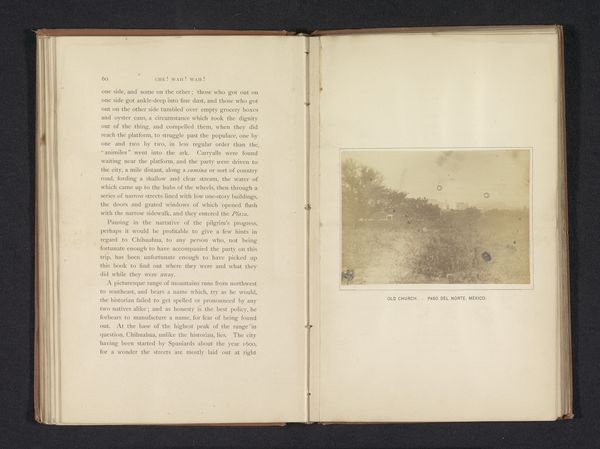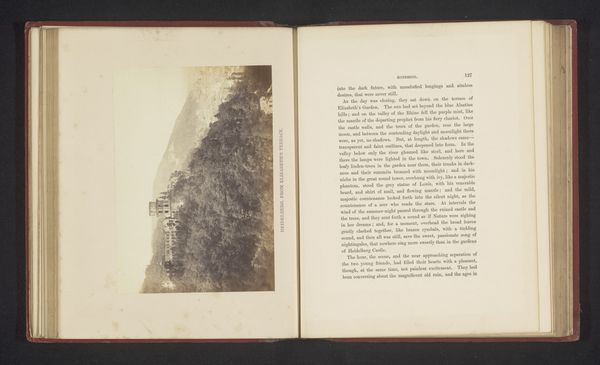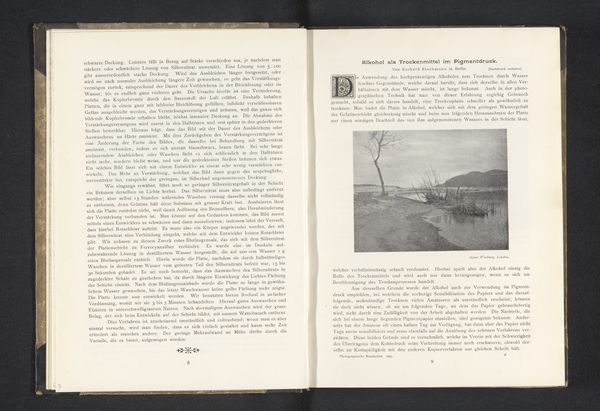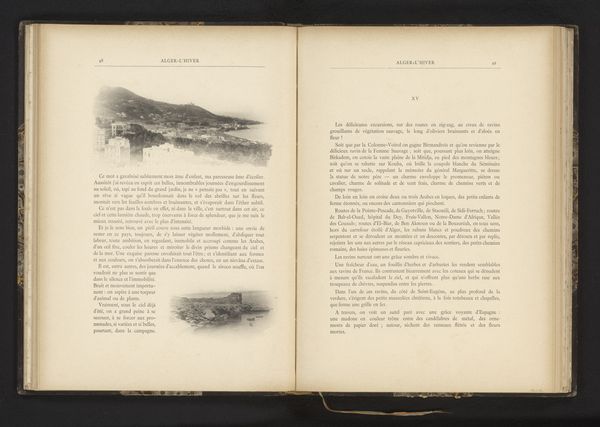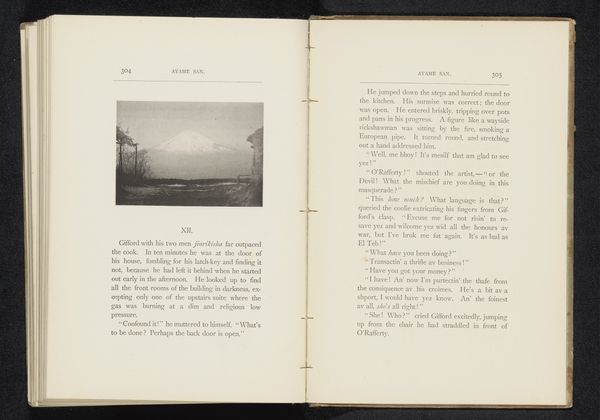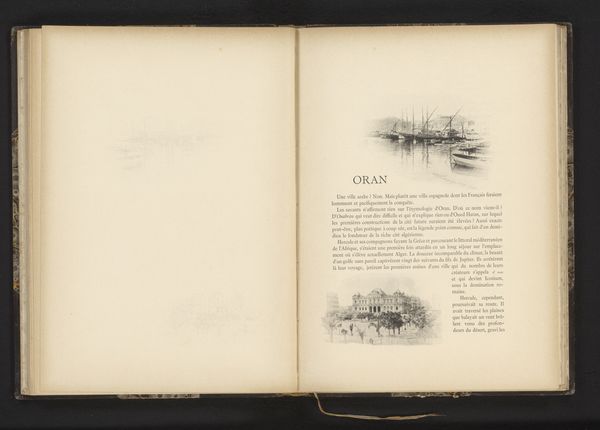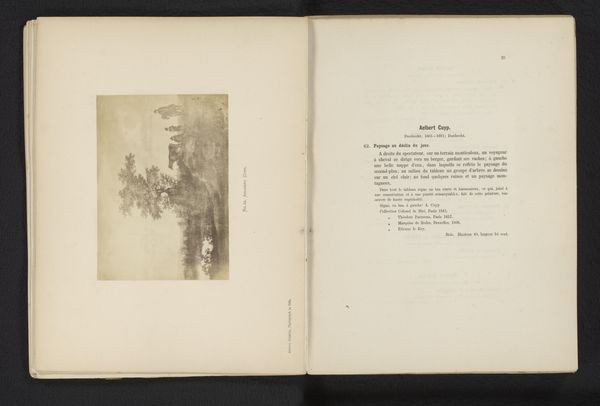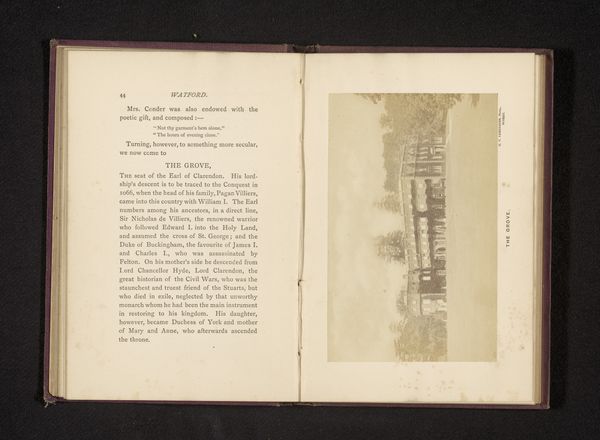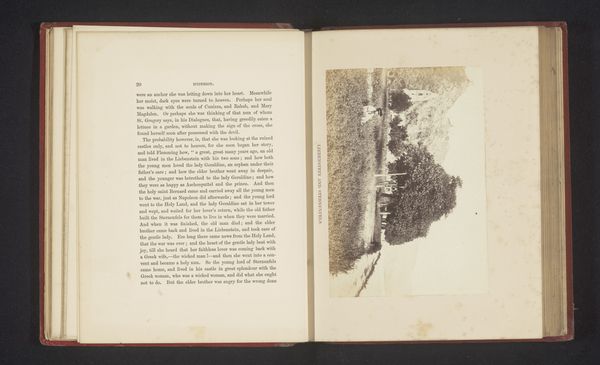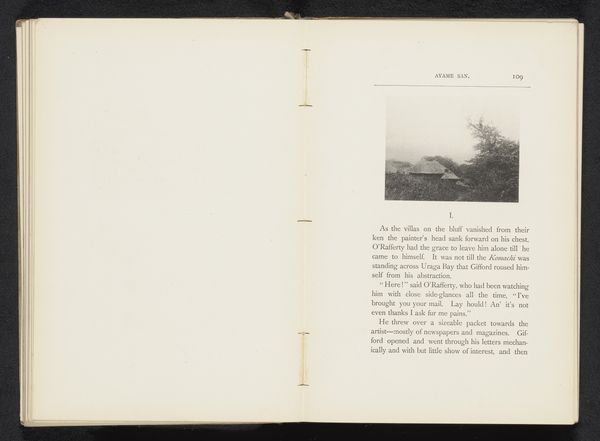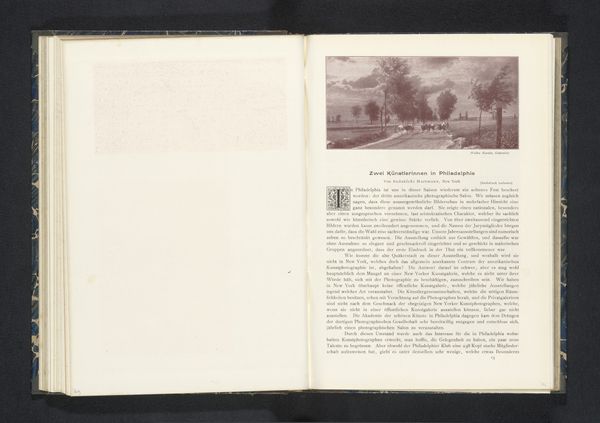
print, photography, albumen-print
# print
#
landscape
#
photography
#
cityscape
#
albumen-print
#
realism
Dimensions: height 255 mm, width 160 mm
Copyright: Rijks Museum: Open Domain
Curator: This image is from an album featuring albumen prints by R.D. Cleveland, predating 1883. The lower image, titled "Bath Houses and Old Hotel, Hot Springs, Las Vegas, New Mexico", gives a glimpse of the architectural landscape. Editor: It strikes me as incredibly stark, almost unsettling. The sharp contrast between the buildings and the hazy landscape evokes a sense of isolation and abandonment, as if history has frozen here. Curator: The albumen print process tends to exaggerate contrasts, heightening light and shadow, which can indeed lead to such an intense mood. Albumen was extremely popular at this time due to the fine detail it rendered. But it also presents a particular vision of the West—a space being “discovered”, codified. Editor: Discovered for whom, right? These landscapes are hardly empty; Indigenous presences are always elided in these 'realist' photographs that were frequently commissioned by settlers. This photographic “realism” is actively constructing and re-imagining whose land this really is, setting the stage for further erasure. Curator: Exactly, the images offer themselves as a sort of proof. Photography during this period served as a tool for documentation, but inevitably also for promoting particular perspectives. Take the architecture—these hotels and bathhouses are not merely buildings, but markers of colonization, intended to impose “civilization.” Editor: Right. They act as imposing signifiers, transforming the local ecologies and the lifeways of the original stewards of this land. We see a society intentionally re-designing the spaces for leisure and “health”, coded language that reflects whose bodies are meant to thrive versus merely survive. Curator: This connects to iconography as well. Even the landscape style, popularized by painters before photography took over, is symbolic of dominance. Framing wide landscapes and urban hubs serves a dual purpose of claiming ownership over the land and documenting economic achievements and development. Editor: The very act of capturing and possessing these images is an act of control. Recognizing that power dynamic inherent in photography of this era helps to reveal the often-hidden socio-political agenda underpinning the artistic expression. What seems to be 'documentation' can be deeply implicated in much larger systemic and violent projects. Curator: A single photograph, then, captures a multiplicity of perspectives and a very complex, interwoven network of symbol and reality. Editor: Absolutely. What lingers is the tension—the allure and erasure, presence and imposed absence woven into the very fabric of this image.
Comments
No comments
Be the first to comment and join the conversation on the ultimate creative platform.
